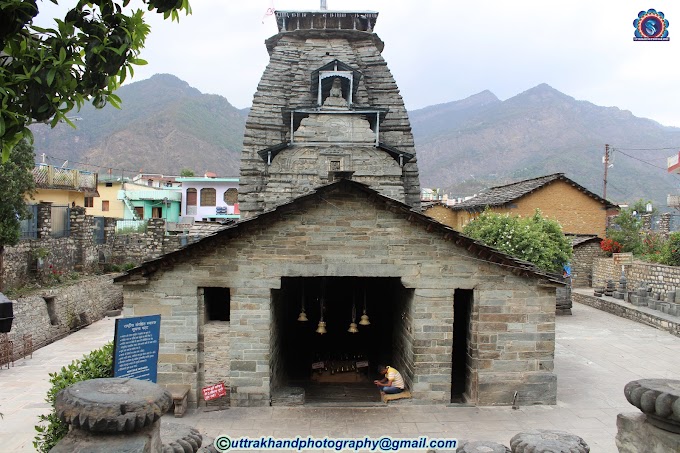How India Transforming after Narendra Modi Government
Some of the key transformations and initiatives that took place in India under the leadership of Prime Minister Narendra Modi. However, please note that my information might be outdated, and I recommend checking more recent sources for the latest developments.
1. Economic Reforms and Policies : The Modi government implemented several economic reforms, including the Goods and Services Tax (GST) in 2017, which aimed to simplify the tax structure and promote a unified market across states. Other initiatives like "Make in India" and "Digital India" were launched to promote manufacturing and digital connectivity, respectively.
2. Infrastructure Development : The government focused on developing infrastructure through initiatives like "Smart Cities Mission," which aimed to modernize urban centers, and the "Pradhan Mantri Awas Yojana" which sought to provide affordable housing to all.
3. Swachh Bharat Abhiyan (Clean India Campaign) : Launched in 2014, this campaign aimed to improve sanitation and cleanliness across the country. It included initiatives to build toilets in rural areas, raise awareness about cleanliness, and promote proper waste management.
4. Jan Dhan Yojana : This financial inclusion scheme aimed to provide banking services and insurance coverage to all households, especially those in rural areas, and to bring them into the formal financial system.
5. Skill India Mission : The government launched this initiative to enhance the skills and employability of the Indian workforce, focusing on vocational training and skill development across various sectors.
6. Digital Initiatives : The "Digital India" campaign aimed to promote digital literacy, provide government services electronically, and improve connectivity in rural areas.
7. Foreign Policy : The Modi government worked to enhance India's international relations and economic engagement with various countries. Initiatives like the "Act East Policy" and strengthening ties with major powers were part of this approach.
8. Security and Defense : The government took steps to modernize and strengthen the Indian armed forces. There was an emphasis on indigenous defense production under the "Make in India" initiative.
9. Environmental Initiatives : The government launched initiatives like the "International Solar Alliance" to promote renewable energy and combat climate change.
10. Healthcare : The "Ayushman Bharat" scheme aimed to provide health insurance coverage to economically vulnerable families and strengthen primary healthcare infrastructure.
11. Women's Empowerment : Initiatives like "Beti Bachao, Beti Padhao" (Save the Girl Child, Educate the Girl Child) were launched to promote gender equality and education for girls.
12. Agricultural Reforms and Initiatives : The government introduced controversial agricultural reforms, including the Farmers' Produce Trade and Commerce (Promotion and Facilitation) Act, which aimed to provide farmers with greater freedom to sell their produce outside of traditional agricultural markets. However, these reforms were met with protests from farmer groups who were concerned about potential impacts on their income and the role of middlemen.
13. National Infrastructure Projects : The government embarked on ambitious infrastructure projects, such as the development of new highways, railways, and the expansion of airports. The "Bullet Train" project between Mumbai and Ahmedabad in collaboration with Japan was also a significant initiative.
14. National Education Policy (NEP) 2020 : The NEP aimed to revamp the education system in India by introducing changes at various levels, including early childhood education, school curriculum, and higher education. It emphasized a multidisciplinary approach and greater flexibility in choosing subjects.
15. Renewable Energy Focus : The government continued its emphasis on renewable energy sources, setting ambitious targets for the expansion of solar and wind energy capacity. India became one of the leading countries in renewable energy deployment.
16. Urban Development and Housing : The "Smart Cities Mission" aimed to transform selected cities into modern and efficient urban centers with improved infrastructure, mobility, and governance.
17. Health Response to COVID-19 : The Modi government faced the challenge of managing the COVID-19 pandemic. Measures included lockdowns, travel restrictions, and the launch of the "Aarogya Setu" app for contact tracing. The government also launched a vaccination drive to curb the spread of the virus.
18. Jammu and Kashmir Reorganization : In August 2019, the government revoked the special status of the state of Jammu and Kashmir and reorganized it into two union territories: Jammu & Kashmir and Ladakh. This move led to mixed reactions and debates about its implications.
19. National Digital Health Mission : Launched in 2020, this initiative aimed to create a digital health ecosystem that would enable individuals to access and manage their health records digitally.
20. Atmanirbhar Bharat (Self-Reliant India) Initiative : In response to the COVID-19 pandemic, the government promoted self-reliance in various sectors and encouraged domestic manufacturing and production.
21. Foreign Policy Engagements : The government continued to engage with various countries through diplomatic efforts and summits, aiming to enhance India's role on the global stage.
22. Environmental Conservation and Clean Energy : Efforts were made to address environmental challenges, including air and water pollution. Initiatives like the ban on single-use plastics and the expansion of the Clean Ganga Mission were part of this approach.
It's important to understand that the impacts of these initiatives and policies are complex and multifaceted, and their effectiveness can be a subject of debate. To get the most accurate and up-to-date information, we recommend checking news sources and official government releases.



.jpg)

















Follow Us